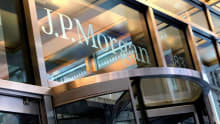Cracking the leadership code in the digital age

In this digital age, where many organizations constitute multigenerational workforce, it has become extremely important that the leadership style undergoes change to keep pace with rising expectations of the millennials. As part of the discussion at People Matters TechHR 2017 Curtain Raiser, which was anchored by Kate Sweetman, an emerging leadership guru, the objective was to figure out the obstacles to the democratization of the top leadership.
Technology as a democratizing force
The above can simply be attributed to the fact that technology by itself is a democratizing force, and the adoption of the same leads to transparency in process and communication, especially from the top to bottom down. However, despite the benefits provided by technology, its adoption still remains a challenge owing to the threat that is perceived by the current leadership to its status quo.
The other challenge that was recognized was that of identification of both the self as a leader and the leadership styles. Breaking this down, the first is primarily about whether the person in a leadership role wishes to be identified as a leader, and then broadening the scope for the same; what kind of leader does he want to be. The other part which is about the leadership style has more to do with the resistance to the adoption of a more collaborative leadership approach, wherein more ideas are welcomed.
Leadership to show vulnerability
The discussion did not just focus on defining the problem but also seeking resolution for the same. The group unanimously agreed that there was a need for the leadership to show vulnerability, especially in situations where they would require ideas from outside the boardroom. But it is not only the top leadership which requires a change in their mindset; the employees too, and as apart from the CEO, need to start thinking and rethinking business strategy, and if growth requires adoption of digital technology, then a consensus with regards to the same must exist in the organization to truly drive a change which is not imposed from top but is holistic in nature. Also, once the employees and the leadership both start thinking business, they would also as a consequence think about being digital.
The answer is culture
Having said this, the challenges only increase, especially in the Indian context where the value of technology and the beneficial change that it can enable is not being communicated to the organization because of the lack of clarity within the leadership itself. Also, adding on to this is the power distance that exists between the leadership and its employees in the organization. This power distance needs to be bridged through the initiatives by the top leadership and eventually should lead to the breakdown of the hierarchy in the organization. And the answer to this is culture.
Creating a culture of acceptance towards both digital technology and ideas within the organization is extremely essential. Again, the challenge to creating such culture is actually more personal than organizational.
Kate Sweetman talked about one of her sessions where she was approached by a young millennial who told her that she was extremely open to change but it should not affect her day. “In the end of the day,” Kate Sweetman said, “it is the same for everybody.”
According to her, the answer here lies in questioning ourselves and asking, ‘How do I know that this is my best day?’
And thus the solution: communicating that technology can bring a positive change to the lives of employees and it could further lead to making their days better. This could actually motivate them towards adopting technology must faster. And to validate this, the organization could also measure the return on investment and compare the ‘cost of change’ to the ‘cost of no change’, and set itself in the right direction.

















